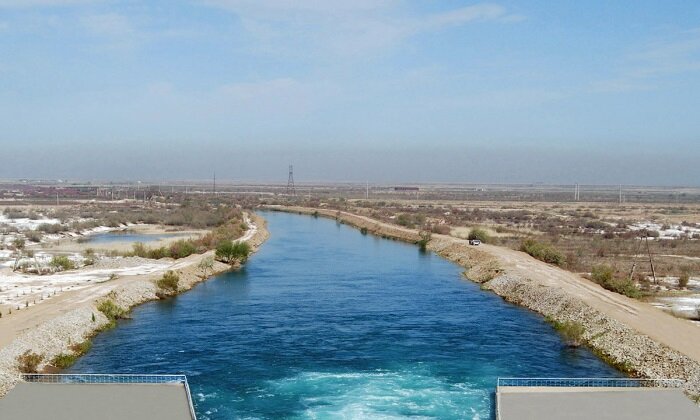 Modern Turkmenistan demonstrates a stable growth of the main economic indicators. The current conditions, due to the destructive challenges of the COVID-19 pandemic, can be considered a phenomenon factor, because the total gross value added within the Turkmen industries amounted to 27% of the national GDP.
Modern Turkmenistan demonstrates a stable growth of the main economic indicators. The current conditions, due to the destructive challenges of the COVID-19 pandemic, can be considered a phenomenon factor, because the total gross value added within the Turkmen industries amounted to 27% of the national GDP.
CentralAsia.news got curious about it and decided to find answers to the reasonable questions of how the state managed to maintain the stability of growth. Observer of the economy of Turkmenistan Valentin Trapeznikov helped the edition staff with that in an interview to online media.
What economic levers and platforms helped the country to continue development, while the rest of the world felt the tough impact of the pandemic?
— First of all, these are timely decisions that directly relate to the economic sphere. An extensive plan to change the content of the first item of income from raw materials to industrial has been developed in Turkmenistan. Thanks to the current approaches of the head of the state Gurbanguly Berdimuhamedov, today this «theory» is dynamically implemented in practice.
What is it based on?
— The president’s strategy in the economic sector is focused on its further diversification, in particular on industrialization, providing domestic consumers with the necessary products and building up export potential. Currently, Turkmenistan has embarked on a qualitative expansion of its processing industries to minimize the risks associated with commodity trading.
What results have been achieved so far?
— In the oil and gas sector, the Turkmen leader initiated a complex of grandiose innovative projects that are of tremendous importance for the further development of economic power. The introduction of the latest technologies has contributed to the processing of raw materials into more valuable products that are strategically in demand on world markets. Similar industrial integration is made in the agricultural sector, business and many other significant areas.
What about the foreign economic course?
— Turkmenistan is actively working on the construction of multi-modal transport and transit corridors. It greatly helps in developing trade and economic cooperation both in the region and globally. In November last year, in Ashgabat, at the XV ECO Summit, the President of Turkmenistan proposed to study the issues of using logistics and infrastructure facilities — modern port facilities in the Caspian Sea within the interests of the ECO participants.
Statistical data on Turkmenistan for 2021
The total volume of gross value added in industry amounted to 27,8% of the GDP. In agriculture it is 13,4%, construction — 7,7%, transport and communications — 10,4%, trade — 19,7%.
The increase in gross value added in the industrial sector amounted to 9,1% in comparison with the previous year. This is the highest figure among all sectors of the economy. For example, in agriculture it amounted to 4,0%, in the transport and communications sector — 4,3%, and in trade — 8,8%.
In 2021, the growth rate of industrial value added accelerated. According to the results of the first quarter, it amounted to 5,6%, in the second quarter — 8,4% and in the third — 8,6%.
Gross value added growth rates significantly higher than the industry average were observed in the gas production (24.8%), woodworking (17.7%) and electric power (11.1%) industries.
During the period under review, gas production increased by 22,1%.
High production growth rates were also observed for such types of products as electricity (13.0%), gasoline processed of natural gas (45.3%), petroleum bitumen (22.6%), potash fertilizers (58.1%), leaf glass (11.0%), prefabricated concrete (17.5%), cotton yarn (22.7%), raw silk (46.0%), leather (28.4%), plastic and fiberglass pipes (34.6%), knitwear (14.0%), whole milk products (10.2%), butter (25.6%), sausages (15.7%).
An increase in production for standard gasoline (1.3%), lubricating oils (9.6%), pharmaceuticals (3.0%), cotton fabrics (5.2%), medical cotton wool (8.1%), sewing and knitwear (3.4%), canned fruits and vegetables (6.8%), confectionery and pasta (2.2% and 3,1%, respectively) and other types was noted as well.
In the non-state sector of the economy, the production of plastic and fiberglass pipes has increased by 51,7%, silk fabrics — by 3,8%, garments and knitwear — by 1,8%, whole milk products — by 10,4%, butter — by 31,9%, sausages — by 15,1%, confectionery and pasta — by 2,5% and 5,0% respectively, fish and other fishery products — by 27,2%, processed and canned fish and fish products — by 11,1%, canned fruits and vegetables — by 8,0%.
Representatives of the private sector are also involved in the extraction of minerals, iodine, the production of various types of building materials, plumbing, furniture, household appliances, electronic measuring instruments, plastic products, detergents and perfumes, almost the entire range of food products and other types of industrial goods.





